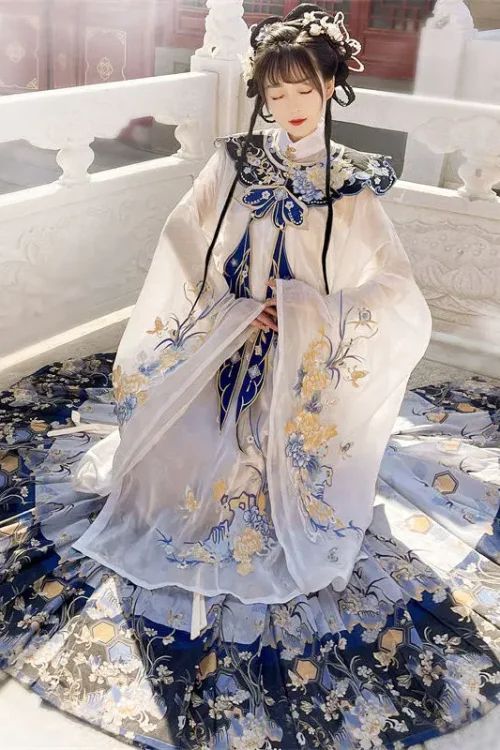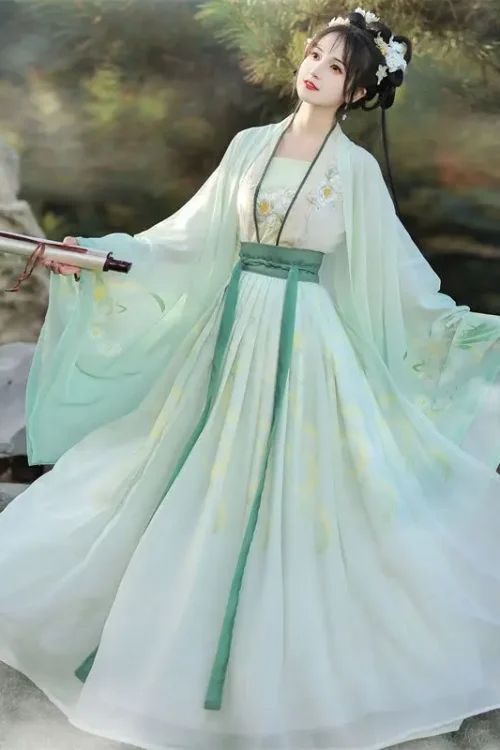The Evolution of Lantern Patterns in Hanfu: Historical Influences and Modern Interpretations
Introduction
The intricate lantern patterns adorning traditional Hanfu, the ancient Chinese attire, have captivated fashion designers for centuries. These patterns, steeped in history and symbolism, have evolved over time, inspiring contemporary fashion designs with their timeless elegance and cultural significance.

Han Dynasty (206 BCE – 220 CE)
During the Han dynasty, lantern patterns emerged as auspicious symbols of prosperity and good fortune. They were often depicted on silk robes and ceremonial garments, representing the hope for a bright future.
Tang Dynasty (618 – 907 CE) and Song Dynasty (960 – 1279 CE)
As Hanfu evolved through the Tang and Song dynasties, lantern patterns became more elaborate, incorporating intricate geometric designs and floral motifs. These patterns reflected the flourishing arts and culture of the time.
Ming Dynasty (1368 – 1644 CE) and Qing Dynasty (1644 – 1912 CE)
In the Ming and Qing dynasties, lantern patterns continued to be popular, but their symbolism shifted. They became associated with the imperial court and were often used on official robes and accessories. The patterns grew more stylized and opulent, reflecting the grandeur of the imperial era.

20th Century Revival
In the 20th century, as Hanfu experienced a revival, lantern patterns regained their popularity. Contemporary fashion designers have embraced these patterns, reinterpreting them in modern contexts. Designers such as Guo Pei and Vivienne Westwood have incorporated lantern patterns into their haute couture collections, showcasing their timeless appeal.
Contemporary Inspiration
The evolution of lantern patterns in Hanfu has been influenced by various factors, including cultural beliefs, artistic trends, and social changes. These patterns have transcended their original purpose, becoming symbols of Chinese heritage and cultural identity.
Current Trends
Today, lantern patterns continue to inspire fashion designers, who draw upon their rich history and symbolism to create innovative and captivating designs. These patterns serve as a bridge between the past and present, connecting contemporary fashion with the traditions of ancient China.
Future Prospects
As Hanfu continues to gain global recognition, lantern patterns are poised to become even more influential in the world of fashion. Their timeless beauty and cultural significance ensure that they will continue to captivate designers and fashion enthusiasts alike for generations to come.
Lantern Patterns as a Source of Inspiration for Contemporary Fashion: Exploring New Silhouettes and Textures
Introduction
Lantern patterns, an integral part of traditional Hanfu attire, have emerged as a captivating source of inspiration for contemporary fashion designers. These intricate patterns, characterized by their geometric shapes and flowing lines, have sparked a renewed interest in the exploration of innovative silhouettes and textures.

Dynamic Quality of Lantern Patterns
The lantern pattern’s unique structure, with its alternating panels of fabric, allows for the creation of garments with a dynamic and sculptural quality. Designers have ingeniously incorporated these patterns into modern designs, resulting in pieces that exude both elegance and a touch of the exotic. The interplay of light and shadow created by the lantern pattern adds depth and dimension to garments, making them visually captivating.
Fabric Experimentation
Moreover, the versatility of lantern patterns has enabled designers to experiment with a wide range of fabrics. From delicate silks to structured brocades, each material lends a distinct character to the pattern. The use of sheer fabrics, for instance, creates an ethereal and flowing effect, while heavier fabrics add a sense of opulence and grandeur.
现代 Reinterpretations
The influence of lantern patterns is not limited to traditional Chinese aesthetics. Designers have reinterpreted these patterns in a contemporary context, incorporating them into garments that cater to a global audience. By combining lantern patterns with modern silhouettes and tailoring techniques, designers have created pieces that are both timeless and fashion-forward.

Cultural Appreciation
The resurgence of lantern patterns in fashion reflects a growing appreciation for cultural heritage and the desire to incorporate traditional elements into modern designs. These patterns offer a rich source of inspiration for designers seeking to create garments that are both visually striking and rooted in history. As designers continue to explore the possibilities of lantern patterns, we can expect to see even more innovative and captivating designs emerge in the future.
The Cultural Significance of Lantern Patterns in Hanfu and Its Impact on Fashion Design
Introduction
Lantern patterns, an integral part of Hanfu, the traditional clothing of the Han Chinese, have captivated the fashion world with their intricate designs and cultural significance. These patterns, inspired by the lanterns used during the Mid-Autumn Festival, symbolize reunion, prosperity, and good fortune.
Aesthetic Appeal
The lantern pattern’s popularity in fashion design stems from its versatility and aesthetic appeal. Designers have incorporated these patterns into a wide range of garments, from flowing dresses to tailored suits, adding a touch of cultural heritage to contemporary fashion. The intricate embroidery and vibrant colors of the lantern patterns create a visually striking effect, making them a favorite among fashion enthusiasts.

Cultural Resonance
Moreover, the cultural significance of lantern patterns has resonated with consumers seeking meaningful connections to their heritage. By incorporating these patterns into their designs, fashion brands have tapped into a growing desire for cultural authenticity and identity expression. The lantern pattern has become a symbol of pride and cultural appreciation, transcending its traditional context and becoming a global fashion statement.
Impact on Craftsmanship
The impact of lantern patterns on fashion design extends beyond aesthetics. These patterns have inspired designers to explore new techniques and materials. The intricate embroidery and beadwork required to create lantern patterns have led to the revival of traditional craftsmanship and the development of innovative embroidery methods. Additionally, the use of silk and other luxurious fabrics has elevated the status of lantern-patterned garments, making them suitable for both formal and casual occasions.
Cross-Cultural Exchange
Furthermore, the popularity of lantern patterns has fostered cross-cultural exchange and collaboration. Designers from around the world have drawn inspiration from these patterns, incorporating them into their own cultural contexts. This has resulted in a fusion of styles and a celebration of diversity in fashion.
结论
In conclusion, the lantern pattern on Hanfu has had a profound impact on fashion design. Its intricate designs, cultural significance, and versatility have made it a beloved motif among designers and consumers alike. By embracing the lantern pattern, fashion has not only celebrated Chinese heritage but also inspired creativity and innovation, fostering cross-cultural exchange and promoting cultural appreciation.
